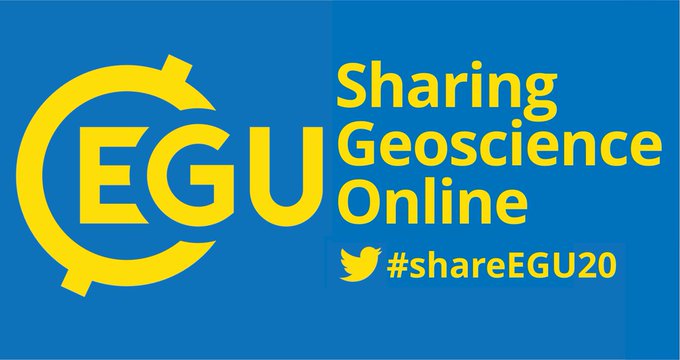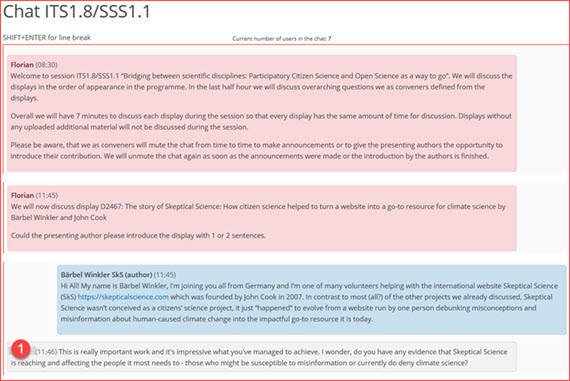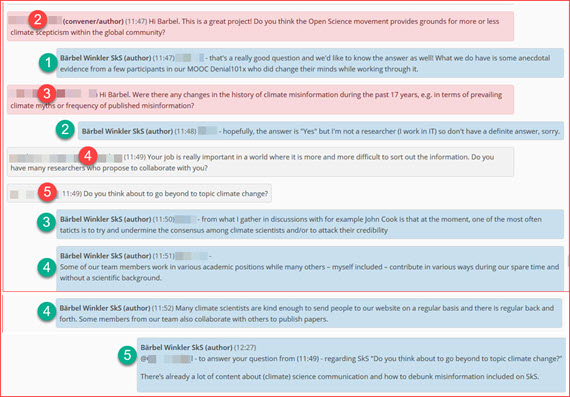
Due to the Corona pandemic and subsequent efforts to slow its spread, this year's General Assembly of the European Geosciences Union (EGU) with around 16,000 participants obviously couldn't take place in Vienna, Austria. As already explained in the initial blog post published a few weeks ago, the organizers decided to still have the conference but to move it almost comletely online - not a simple task to do within just a few weeks and with around 700 sessions and 18,000 submitted abstracts in the program! On Monday morning, May 4 2020 Sharing Geoscience Online (#ShareEGU20) kicked off with its first sessions, now all held as typed chats.

Like me, you are possibly wondering how chat-sessions could work for scientific sessions, especially as the tool was only selected and put together a few weeks ago! So, EGU provided a lot of information for conveners, authors and attendees of these chat sessions to hopefully answer most of their questions. This even included a short recorded chat-demo on Youtube!
Luckily enough, I didn't have to wait long to find out first-hand how these chats would work as session ITS1.8/SSS1.1 - Bridging between scientific disciplines: Participatory Citizen Science and Open Science as a way to go including John Cook's and my contribution "Story of Skeptical Science" was scheduled to start at 8:30 right on Monday morning! The session contained many abstracts and it had originally been divided into one part with oral and a second half with poster presentations. For #shareEGU20 everybody now could upload a display but organisers still kept things in two parts in a 4 hour long session including a 30 minutes break in the middle. Our contribution about SkS was scheduled to get its "airing" at 11:43 for about 7 minutes. I therefore had ample time and occasion to see how things unfolded with the many other presentations being briefly discussed before it was my turn.
The collage gives only an inkling of the diverse cross-section of projects involving citizen scientists, each briefly explained via "chatted" Q&As in a 7-minutes slot. Presented projects are run in many countries (in no particular order and most likely missing some): Nepal, Spain, Turkey, Austria, Australia, Iceland, Sweden, Germany, Estonia, France, Romania, Fiji and Italy. They "target" different groups of people: school children, students, whole communities, gardeners, farmers or foresters. They look at many different parts of the Earth's systems: soil, river, sea level, coasts, mountains and forests. And some of them have truly creative project names: QConut, Heavy Metal City-Zen, CitizenMorph, ChessWatch, SECOSTA or TeaTime4App. Please take some time and scroll through the list of displays for the sessions. Most of the authors uploaded their presentations as PDFs, PowerPoints or recordings and these will stay available and open access from now on.
During the 2nd part of the chat-session, our presentation got called up right at the scheduled time at 11:43 and here is how it went within the 7 minutes allocated for it:


I masked all but the convener's and my own name and numbered the questions (red) and answers (green) to make it easier to follow the "flow". And if you haven't checked out the "Story of Skeptical Science" and its many facets yet, here it is again:
According to EGU-stats mentioned in a tweet from Prof. Dan Parsons, 153 chat sessions happened on Monday, with over 12k "attendees" and a median chat attendance of 90 (ours had up to 255!) All told, this was a great start to what is bound to be an interesting and eventful week of Sharing Geoscience Online!
Posted by BaerbelW on Tuesday, 5 May, 2020
 |
The Skeptical Science website by Skeptical Science is licensed under a Creative Commons Attribution 3.0 Unported License. |